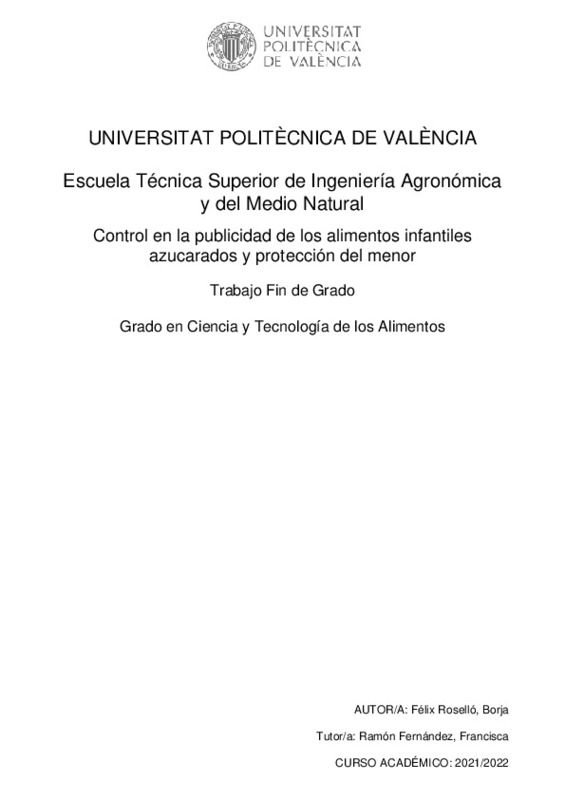|
Resumen:
|
[ES] En España, se ha incrementado en los últimos años el número de niños que padecen diabetes y/o obesidad infantil, siendo una de las principales razones el llevar una vida sedentaria, donde practican menos actividad ...[+]
[ES] En España, se ha incrementado en los últimos años el número de niños que padecen diabetes y/o obesidad infantil, siendo una de las principales razones el llevar una vida sedentaria, donde practican menos actividad física que hace unos años por el auge de los dispositivos móviles, pero también debido a la alimentación y es que, sus desayunos y meriendas en especial, se caracterizan de productos azucarados, dulces y demás bollería con alto valor energético y mucha cantidad de azúcar, donde también abundan las grasas y con la ausencia de la mayoría de vitaminas y minerales necesarias en estas edades para tener un correcto desarrollo y crecimiento. Además de influir notablemente en su peso, esta combinación de sedentarismo y mala alimentación, provoca que a largo plazo puedan padecer numerosas enfermedades.
Estos alimentos nada saludables se consumen debido a la gran publicidad emitida tanto en televisión como en redes sociales, siendo el primer caso alarmante ya que se emite en horario infantil, muchos niños y niñas lo ven y acaban sucumbiendo a esos productos ya que son anuncios muy llamativos, con envases con dibujos o personajes de sus series favoritas, en muchos va un juguete como regalo además de ser enriquecidos con algunos minerales o vitaminas como si el resto de ingredientes del producto fuera sano además de que pueden obtener estas vitaminas o minerales en productos frescos y saludables como son los frutos secos o las frutas de temporada.
Se propone en el presente trabajo realizar un análisis de la publicidad emitida en distintos medios de comunicación (televisión, prensa y redes sociales) teniendo en cuenta la regulación actual mediante la ley de publicidad y el denominado código PAOS, así como atender a la futura modificación legislativa en la que se limitará el contenido publicitario de alimentos con altos niveles de azúcar durante la emisión de programas infantiles.
[-]
[EN] In Spain, the number of children suffering from diabetes and/or childhood obesity has increased in recent years, one of the main reasons being to lead a sedentary life, where they practice less physical activity than ...[+]
[EN] In Spain, the number of children suffering from diabetes and/or childhood obesity has increased in recent years, one of the main reasons being to lead a sedentary life, where they practice less physical activity than a few years ago due to the rise of mobile devices, but also because of the food and is that, their breakfasts and snacks in particular, are characterized by sugary products, sweets and other pastries with high energy value and a lot of sugar, where fats also abound and with the absence of most vitamins and minerals needed in these ages to have a proper development and growth. In addition to having a significant influence on their weight, this combination of sedentary lifestyle and poor diet causes them to suffer from numerous diseases in the long term.
These unhealthy foods are consumed due to the large advertising broadcast on both television and social networks, being the first alarming case since it is broadcast in children¿s hours, many children see it and end up succumbing to those products as they are very eye-catching advertisements, with packaging with drawings or characters from their favourite series, in many goes a toy as a gift in addition to being enriched with some minerals or vitamins as if the rest of the ingredients of the product were healthy in addition that they can get these vitamins or minerals in fresh and healthy products such as nuts or fruits seasonal.
It is proposed in this paper to carry out an analysis of the advertising broadcast in different media (television, press and social networks) taking into account the current regulation through the advertising law and the so-called PAOS code, and to take account of the future legislative amendment limiting the advertising content of foods with high sugar levels during the broadcasting of children¿s programmes.
[-]
|







